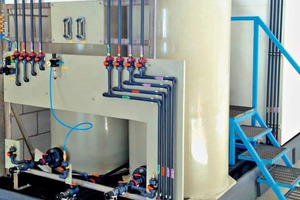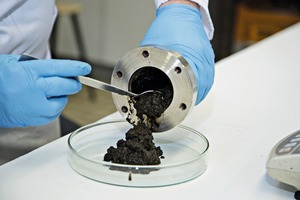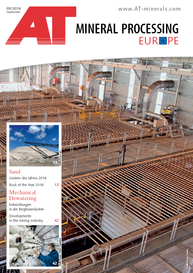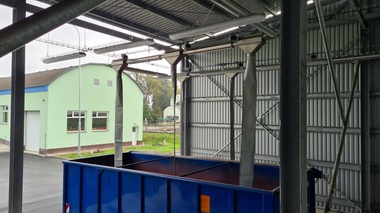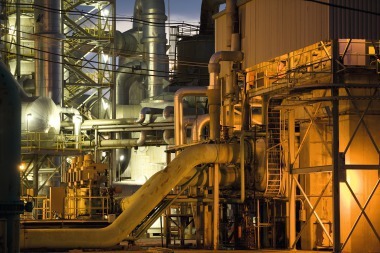Environmentally compatible phosphate fertilizer from sewage sludge
Municipal sewage plants have to dispose of just under two million tonnes dry sewage sludge per year. This contains essential phosphor, which can be recovered with the new process from the Hohenheim agricultural engineer Prof. Dr Andrea Kruse free of harmful substances and at low cost for fertilizer. An AVA cleanphos pilot plant (Fig. 1), which is testing the HTC process (hydrothermal carbonization) in field-like conditions, is going into operation at AVA Green Chemistry Development GmbH in Karlsruhe. The German Federal Environmental Federation (DBU) is supporting the project.
A breakthrough in the recovery of phosphor, as the amended sewage sludge ordinance requires – that is what the industry expects from successful AVA cleanphos pilot plant testing. The HTC process first converts sewage sludge into CO2-neutral biochar (Fig. 2). Then the phosphate is isolated and recovered. In this way, two economically interesting products are produced: a valuable phosphor product and the phosphor-free HTC sewage sludge char. Thanks to AVA cleanphos, this can be used in the future as a substitute for lignite or coal in co-combustion, leading to substantial savings in CO2 emissions.
First results from the operation of the AVA cleanphos plant will be presented to the public already in the fourth quarter of 2016. The HTC process in combination with the AVA cleanphos solution clears the way for genuine, long-term recycling of the sewage sludge.
New possibilities for agriculture
The recovered phosphor can be used as fertilizer in agriculture. This has not been straightforward matter up to now. “Although sewage sludge contains a lot of valuable phosphate, a lot stands in the way of agricultural use,” explains Prof. Dr Andrea Kruse, agricultural engineer at the University of Hohenheim. “The sludge can carry pathogens and also contains many heavy metals.”
Existing technologies for the recovery of phosphor rely primarily on disposal in monocombustion plants to recover the phosphate from the ashes and process it as fertilizer. These processes are regarded as expensive and are much more work-intensive than the HTC solution. So far, phosphate still comes from mineral plants in China, the USA and Morocco. “These mineral plants have, however, now been heavily exploited,” continues Prof. Dr Kruse. “So we need new phosphate sources. Sewage sludge is one of these, and with the HTC-based AVA cleanphos technology it can be made useful.”
HTC – a low-cost alternative to current sewage sludge combustion
Separation of valuable phosphate from toxic heavy metals – that is the big advantage of the HTC process. Over 80 % of phosphate from the sewage sludge is preserved. The heavy metals, however, remain in the char and therefore don’t land on the fields. In practice, a few more steps are necessary, says Prof. Dr. Kruse. “This we are examining in pilot operation of the cleanphos plant.”
$(LEhttp://

